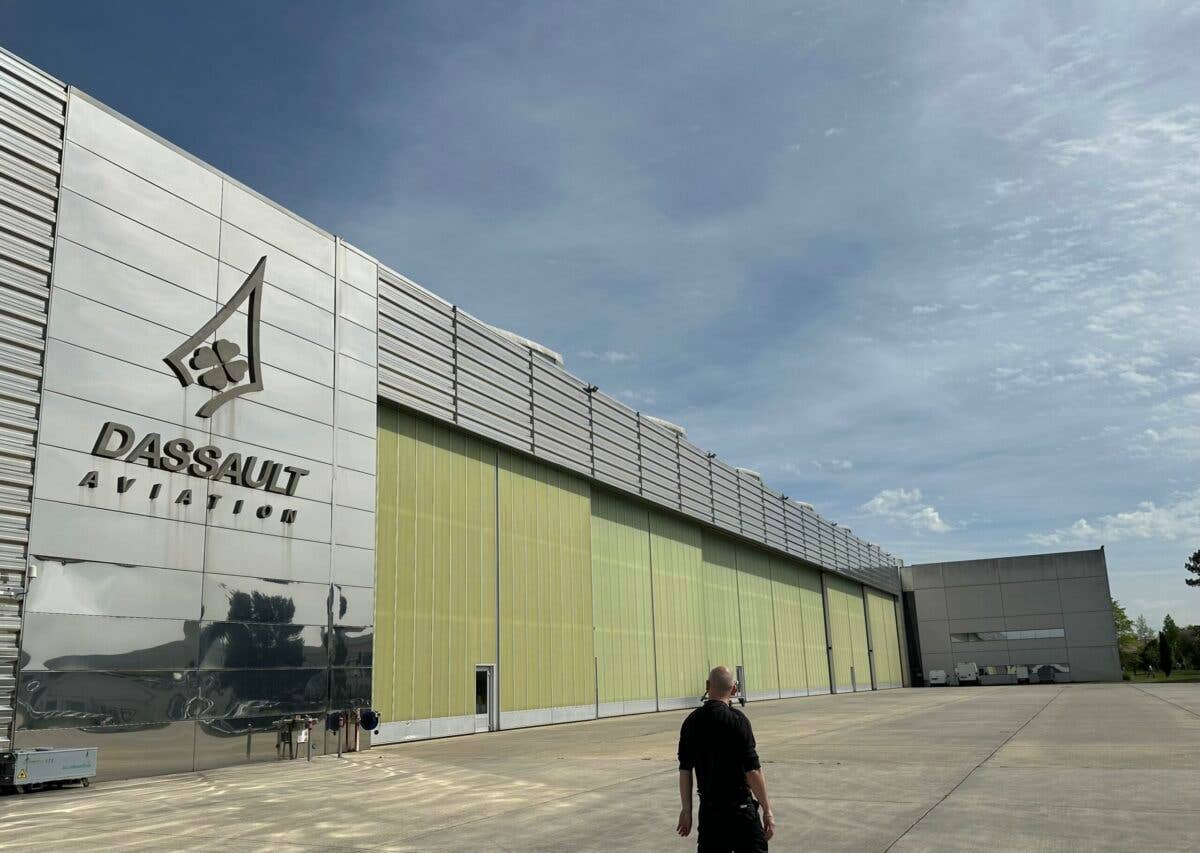Nothing Like Being There
A visit to Dassault Aviation in France illuminates why flying—and business aviation—remains critical to connecting our world.

Dassault Aviation has production facilities in Bordeaux (pictured) as well as several other locations around France. [Credit: Julie Boatman]
The light freckled on the white beadboard ceiling where it bounced into the dining room of Le Talisman—a Seine river barge kept at Dassault Aviation’s headquarters in Saint-Cloud, Paris, France—last Thursday, April 27. How could I see that light for myself—and sit around the table with new friends from the storied business jet and defense manufacturer—except for the transatlantic connection provided by aviation?
Yes, in theory, you could untie the very boat we were in and float out to the mouth of the Seine at Le Havre, and you could make your way across an oft-feisty ocean at sea level—but why on Earth would you do that when you could slide onto the flight deck of Dassault’s new Falcon 6X and make the jaunt in comfort and class at Flight Level 430 in less than 7 hours?
While the court of public opinion at times gives the microphone to voices calling for the end of flying, we know within our ranks that we hold the solution to sustainable flying—and the way to get there is to fly forward, not slam us to a collective stop with full reversers.
There are problems to solve with sustainable aviation fuel (SAF), for one, but Dassault is already using a 40-percent blend in its operations at Paris Le Bourget (LFPB) and Bordeaux-Merignac (LFBD). The wide-body 6X and even grander 10X sit poised to debut with SAF fully tested—perhaps up to a 100 percent level by the time the 10X gains certification as projected in 2025. And it’s just one OEM out of a chorus of them moving along the same lines.
Éric Trappier, president and CEO of Dassault Aviation, dropped by our lunch that day to talk about the indications ahead in finance and supply chain following the release of Boeing’s Q1 results, along with his own assessments. A softening of the market seems at hand—but after the heady surge of 2022, a “normalization” seems prudent.
While protests in Paris, London, and Amsterdam have captured recent headlines stateside, we witnessed none of the furor firsthand on this trip. Instead I felt an uneasy calm as we work to figure out how to tell our story in a way that resonates with those who need to hear the reassurance that we can keep flying, keep innovating, keep aspiring.
Across the river from Dassault lies the Bois de Boulogne—Paris’ great green space—and the Parc de Bagatelle, a garden that covers the spot where Santos-Dumont first flew his No. 14-bis in September 1906. Just a block away, Louis Bléirot’s factory once stood, and the vintage sign from that roof announces to passersby the history entrenched in the scene.
Great aeronautical design still sparks to life here, with the site of the current Dassault Group buildings over a former engine factory. The lightweight-for-the-class Falcon series preserves performance while making tracks across the sky in a more efficient way than its competitors—and utilizes shorter runways closer to the passengers' intended destination, saving fuel and time.
And isn’t time our most precious commodity?
The lightness of being is the Dassault raison d’être, in their tack towards not only efficiency but runway performance. Combined with higher wing loading than others in the class, they promise a better ride through the bumps—and a nimbleness derived from the Rafale fighter’s heritage.
You can read Fred George’s We Fly report on the Falcon 6X in the May 2023/Issue 937 print edition of FLYING that’s about to land in your mailbox if you subscribe. George took an exclusive first flight in the graceful, master stroke of the class—and he shares his expertise in the business aviation arena with FLYING’s readers for the first time after returning to us as a contributor.
Because there’s nothing like being there—and stepping into the left seat to do it.

Sign-up for newsletters & special offers!
Get the latest FLYING stories & special offers delivered directly to your inbox






